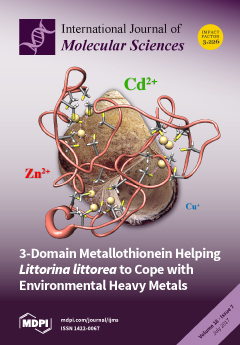Dioscorin is one of the major soluble proteins in yam tubers. Unlike other well-known plant storage proteins, such as patatin and sporamin, dioscorin is argued for its function as storage proteins, and the molecular mechanisms underlying its expressional complexity are little understood. In
[...] Read more.
Dioscorin is one of the major soluble proteins in yam tubers. Unlike other well-known plant storage proteins, such as patatin and sporamin, dioscorin is argued for its function as storage proteins, and the molecular mechanisms underlying its expressional complexity are little understood. In this study, we isolated five dioscorin
genes from
Dioscorea alata L., comprising three class A (
Da-dio1, -
3 and -
4) and two class B (
Da-dio2 and -
5) isoforms. Expressions of all dioscorin
genes
gradually decreased in mother tubers during yam sprouting and regrowth. On the other hand, all dioscorin genes accumulated transcripts progressively with tuber development in new tubers, with
Da-dio5 being the most prominent isoform. In yam leaves, the expressions of
Da-dio5 were up-regulated by the treatments of five phytohormones (gibberellic acid, salicylic acid, indole-3-acetic acid, abscisic acid, and ethylene), and three abiotic stresses (high-temperature, low-temperature and drought). To further elucidate the regulatory mechanisms of
Da-dio5 expressions, transgenic
Arabidopsis plants harboring the
Da-dio5 promoter-β-glucuronidase (GUS) fusion were generated. GUS staining showed that expressions of the
Da-dio5 promoter were detected mainly in the shoot apical meristem (SAM) and hypocotyls, and enhanced by the treatments of the five hormones, and the three abiotic stresses mentioned above. These results suggest diverse roles of
Da-dio5 in yam sprouting, regrowth, and tuberization, as well as in response to enviromental cues.
Full article






